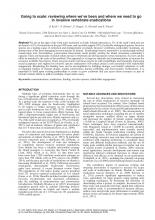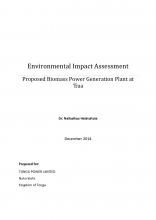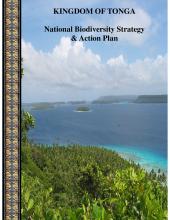The Project for Upgrade of Wharf for Domestic Transport [in Tonga] : Environmental Impact Assessment Report

Island and Ocean Ecosystems
Available Online
The Kingdom of Tonga is in the South Pacific Ocean with an archipelago of 169 islands with only 36 islands being inhabited. Domestic inter-island shipping plays a crucial role in providing the fundamental means of transportation for the Tongan people, and it is Ministry of Infrastructure (MOI) responsibility to ensure its safe and secure operation. Currently, in Nukualofa Port, the domestic inter-island ships berth at Faua wharf and Queen Salote wharf. Faua wharf can only accommodate ships under 300 gross tonnage mainly due to the shallow depth and lack of basin space. Larger domestic ships are therefore now berthing at Queen Salote wharf, at berths 3 and 4. However, due to the lack of space in the berthing, cargo handling and passenger waiting areas, allocation of an alternative berthing area for large domestic ships has been become an urgent necessity. Furthermore, for safety and security reasons, the port plans to allocate Queen Salote wharf solely of international ships, which was the original plan.







